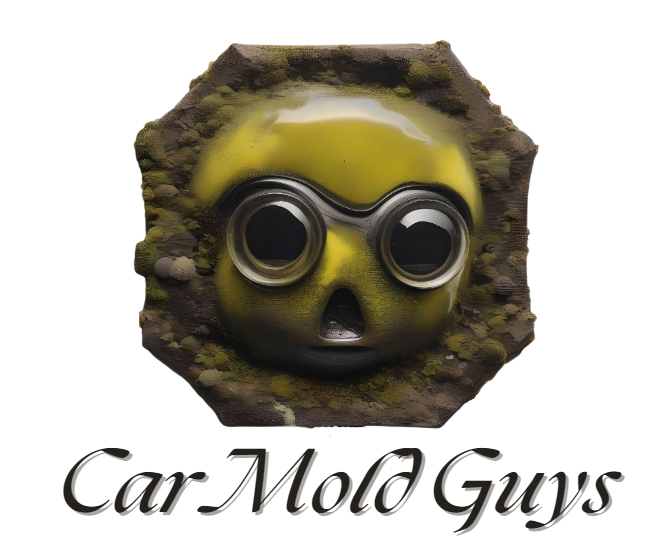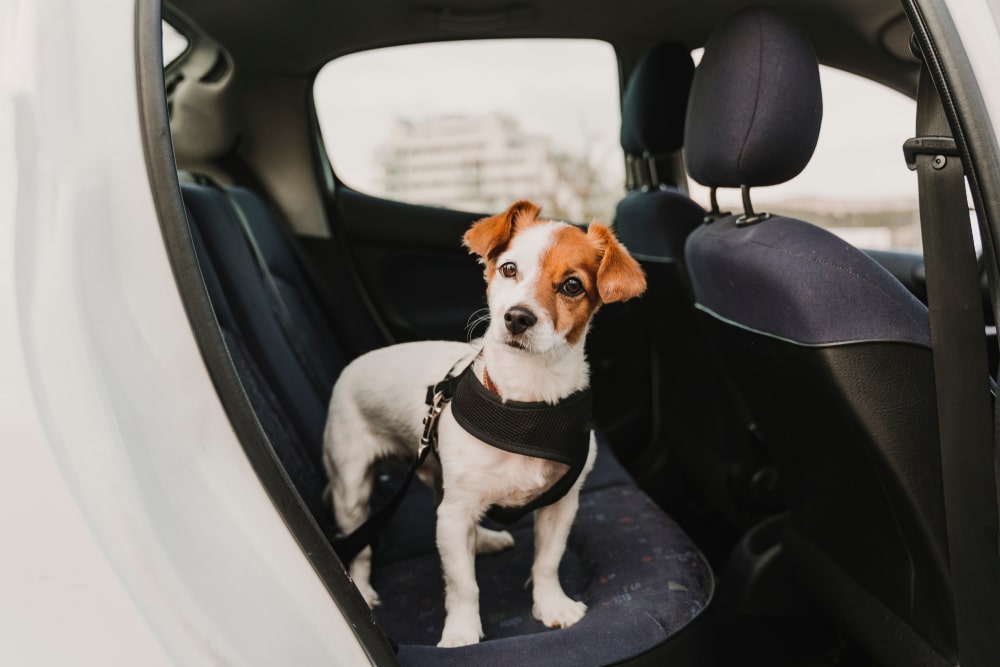Pet hair can play a significant role in contributing to mold growth in cars. Understanding the relationship between pet hair and mold development is crucial for preventing mold issues and maintaining a healthy environment for both you and your pets.
Health Risks of Mold in Cars to Pets-Smaller body sizes and less advanced immune systems make our pets more susceptible to mold-related health issues than us. Even slight exposure to mold can be devastating for your furry friends.
Mold can thrive pretty much anywhere pets like to spend time. Knowing the signs of mold exposure in pets can help you seek appropriate medical attention and avert life-threatening situations.
Mold in cars can have several adverse effects on pets. Just like humans, pets are susceptible to mold exposure and can experience a range of health issues.
Dogs love to eat whatever they can find, even if it comes out of the trash. And while most times they are fine, ingesting moldy food is a whole other beast. Some of the symptoms to look out for include reduced appetite, stool changes, and vomiting. You might notice tremors and seizures if your pet ingests a lot of moldy food.
Here are some key points to consider:
How Pet Hair Contributes to Mold Growth in Cars
Moisture Retention
Moisture Trapping:
- Absorbent Nature: Pet hair can trap and hold moisture, especially if it’s damp from a rainy day, a trip to the lake, or a recent bath. This retained moisture can create a conducive environment for mold spores to thrive.
- Humidity: The presence of pet hair in a confined space like a car can increase the humidity levels, further promoting mold growth.
Organic Material
Nutrient Source:
- Organic Debris: Pet hair, along with dander and skin flakes, provides a rich source of organic material that mold spores can feed on. This organic matter can accumulate in hard-to-reach areas of the car, such as under seats and in ventilation systems.
- Growth Medium: The combination of moisture and organic material from pet hair creates an ideal growth medium for mold.
Airflow Obstruction
Ventilation Issues:
- Clogged Vents: Pet hair can obstruct car ventilation systems and filters, reducing airflow and creating pockets of stagnant air where mold can flourish.
- Air Quality: Poor ventilation and reduced air circulation can increase humidity levels and the likelihood of mold growth.
Moisture Control
Drying Techniques:
- Air Drying: After your pet has been in the car, especially if they were wet or damp, leave the windows slightly open (if safe) or run the air conditioning to dry out the interior.
- Dehumidifiers: Use portable dehumidifiers or moisture absorbers to keep the car interior dry. Silica gel packs or activated charcoal can help absorb excess moisture.
Pet Preparation
Grooming:
- Regular Grooming: Keep your pet well-groomed to reduce shedding. Brush your pet frequently to remove loose hair and dander before they enter the car.
- Bathing: Bathe your pet regularly to reduce the amount of hair and dander they shed.
Protective Covers:
- Seat Covers: Use removable, washable seat covers to protect your car’s upholstery. Choose covers that are easy to clean and designed to trap pet hair.
- Cargo Liners: If you transport your pet in the trunk or cargo area, use cargo liners that can be easily removed and cleaned.
Regular Cleaning and Maintenance
- Interior Maintenance: Regularly clean the car’s interior, including seats, carpets, and mats, and air vents to prevent mold growth.
- Wiping Surfaces: Use a damp cloth or pet hair remover tools to wipe down seats, floors, and other surfaces to ensure no hair is left behind.
- Vacuum Frequently: Use a vacuum with a HEPA filter to remove mold spores from the car’s upholstery and flooring. Regularly vacuum your car’s interior to remove pet hair, dander, and other debris. Use attachments to reach under seats, in crevices, and other hard-to-reach areas.
- Use Mold-Resistant Products: Opt for mold-resistant seat covers and floor mats.
- Anti-Mold Sprays: Apply pet-safe anti-mold sprays to the car’s interior surfaces to disinfect surfaces and prevent future growth.
- Shampooing: Periodically shampoo fabric seats and carpets to remove any embedded pet hair and dander. Make sure to dry the upholstery thoroughly to prevent moisture buildup.
- Dry Wet Areas: Immediately dry any wet areas in the car to prevent moisture buildup.
- Leather Conditioning: If your car has leather seats, clean and condition them regularly to remove hair and maintain their integrity.
Remediation of Mold in Cars
- Deep Cleaning: If mold is detected, a thorough cleaning of the affected areas is necessary. This might involve removing and cleaning seats, carpets, and other components.
- Check for Leaks: Regularly inspect the car for any leaks, particularly around windows, doors, and the sunroof, and repair them promptly.
- Monitor Humidity Levels: Use a hygrometer to monitor the humidity levels inside the car and keep them below 50%.
- Moisture Control: Ensure the car is kept dry by fixing any leaks
- Filter Replacement: Regularly check and replace your car’s cabin air filter. Consider using filters designed to trap pet hair and dander.
- Vent Cleaning: Clean the air vents and ducts to ensure proper airflow and reduce the likelihood of mold growth in the ventilation system.
- Ensure Proper Ventilation: Consider using portable air purifiers/dehumidifiers designed for cars to reduce airborne mold spores and to maintain a dry environment.
- Silica Gel Packs: Place silica gel packs or activated charcoal bags in the car to absorb excess moisture.
- Ventilate the Car: Regularly ventilate the car by opening windows and doors to allow fresh air to circulate. and reduce humidity levels.
Safe Transport
- Remove Mold Source: Clean and remove the mold from your car to prevent further exposure. Ensure your car is dry and mold-free before allowing your pet back inside.
- Regular Inspections: Regularly inspect the car for signs of mold, especially if you frequently transport pets.
- Use Pet Carriers: Keep pets in carriers or designated pet seats that are easy to clean and maintain.
Professional Mold Remediation
- Specialized Services: For extensive mold issues, consider hiring a professional mold remediation service. They have the tools and expertise to safely and effectively remove mold from your car
- Inspection: If you suspect mold growth due to pet hair, have a professional inspect your car. They can identify hidden mold and provide recommendations for remediation.
- Testing: Professionals can conduct air quality tests to determine the extent of mold contamination.
- Routine Check-Ups: Have regular professional inspections to ensure the car remains mold-free, especially if you live in a humid climate.
Symptoms of Mold Exposure in Pets
Respiratory Issues
Symptoms:
- Allergic Reactions: Pets can develop allergic reactions to mold spores, leading to symptoms such as persistent coughing, wheezing and labored breathing due to mold spores irritating their respiratory system.
- Asthma and Bronchitis: Prolonged exposure to mold can exacerbate asthma and bronchitis in pets, especially in those with pre-existing respiratory conditions.
- Sneezing and Nasal Discharge: Constant sneezing and nasal discharge are common symptoms of respiratory distress caused by mold.
- Pneumonia: In severe cases, mold exposure can lead to pneumonia, a serious lung infection requiring immediate veterinary attention.
Allergic Reactions
Symptoms:
- Dermatitis: Persistent exposure to mold can cause dermatitis, a chronic skin condition characterized by inflamed, itchy, sore skin, allergic dermatitis, and swelling can occur, particularly around the eyes, ears, and paws.
- Skin Irritation: resulting in itching, redness, and inflammation. Pets may scratch or bite their skin excessively, leading to secondary infections due to allergic reactions to mold spores.
- Ear Infections: Mold spores can lead to recurring ear infections, especially in pets with floppy ears where moisture can easily get trapped.
Gastrointestinal Issues
Symptoms:
- Vomiting and Diarrhea: Pets may ingest mold spores by licking contaminated surfaces or grooming themselves after being in a moldy environment. This can lead to gastrointestinal issues such as vomiting, diarrhea, and loss of appetite.
Neurological Symptoms
Symptoms and Behavioral Changes:
- Lethargy and Depression: Pets may become unusually lethargic, depressed, or show signs of disorientation, and increased grooming
- Weakened Immune Response: Chronic mold exposure can weaken the immune system, making pets more susceptible to infections and other illnesses.
- Toxic Mold Exposure: Certain types of molds produce mycotoxins, which can be harmful if ingested or inhaled. In severe cases, mold toxins can affect the nervous system. Symptoms of mycotoxin exposure include tremors, seizures, and changes in behavior or coordination.
Immune System Suppression
Symptoms:
- Increased Susceptibility to Infections: Pets exposed to mold may become more prone to other infections due to a weakened immune system.
Long-Term Effects
- Weight Loss: Chronic gastrointestinal issues can lead to significant weight loss and malnutrition.
Veterinary Care:
Treating Symptoms of Mold Exposure in Pets
- You need to see a vet immediately if you notice symptoms of mold exposure in your cat or dog. Arranging for your pet to stay with a friend prevents continued exposure and ensures that the symptoms don’t worsen. The vet will most likely prescribe medication to treat the symptoms. You may also be asked to isolate your pet from other pets.
- Monitor Health: Keep a close watch on your pet’s health and report any new symptoms to your vet.
- By taking these preventive steps, you can safeguard your pets’ health and well-being.
Conclusion
Pet hair can significantly contribute to mold growth in cars by trapping moisture, providing organic material, and obstructing airflow. Regular cleaning, moisture control, proper ventilation, and grooming of your pets are essential steps to prevent mold issues. If mold growth occurs, prompt inspection and remediation are necessary to maintain a healthy environment for both you and your pets.
Mold in cars can pose serious health risks to pets, causing respiratory issues, allergic reactions, neurological effects, gastrointestinal distress, neurological symptoms and immune system suppression.
To protect your pets, it is essential to maintain a clean and dry car environment, use preventive measures like moisture control and proper ventilation, and seek professional help if mold is detected.
Regular veterinary check-ups and prompt medical attention can help mitigate the risks associated with mold exposure in pets.

